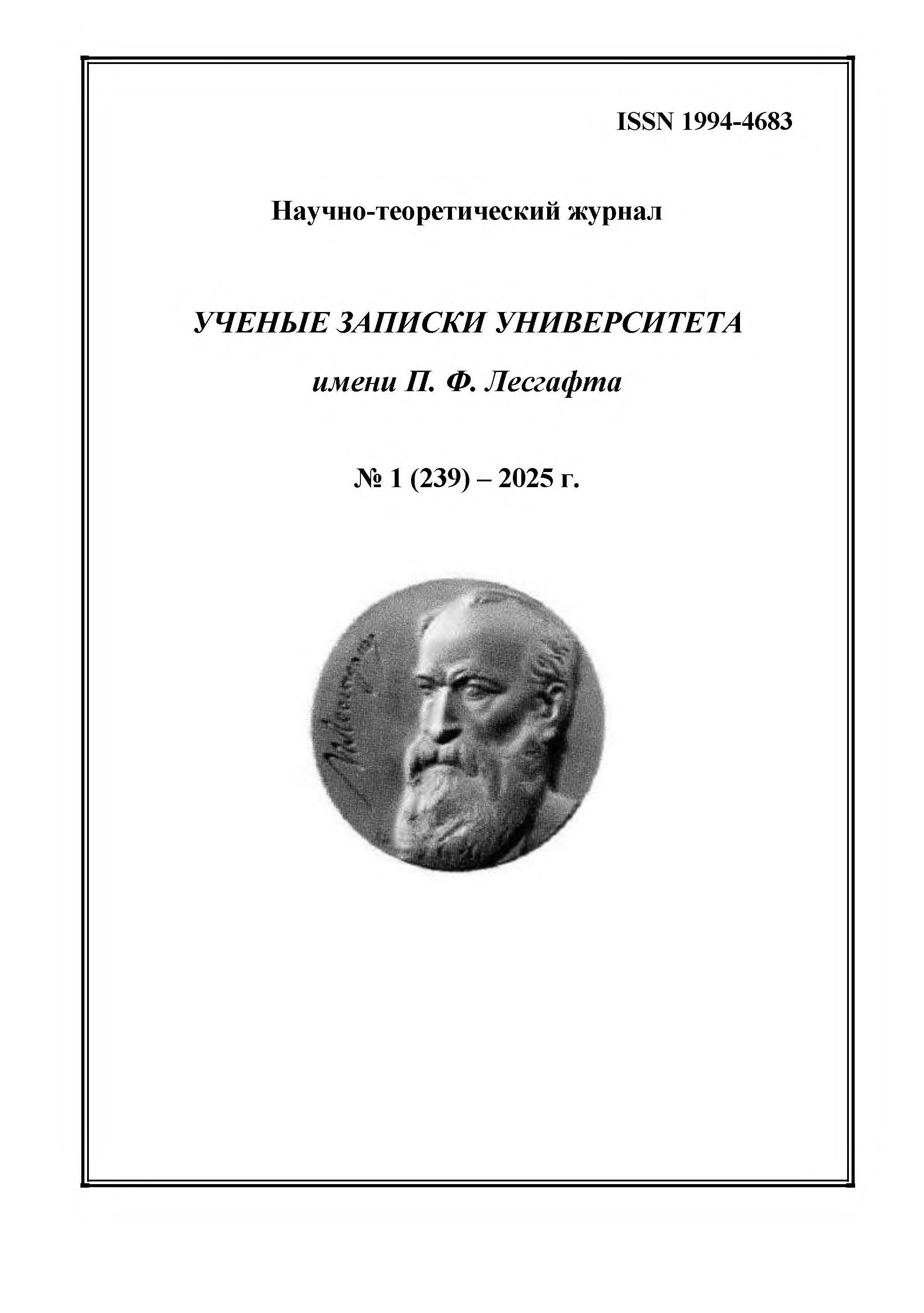employee from 01.01.1981 until now
Khabarovsk, Khabarovsk, Russian Federation
employee from 01.01.2010 until now
Khabarovsk, Khabarovsk, Russian Federation
UDC 796.07
CSCSTI 77.00
Russian Classification of Professions by Education 49.00.00
Russian Library and Bibliographic Classification 1
Russian Trade and Bibliographic Classification 8
BISAC SPO SPORTS & RECREATION
The purpose of the study was to attempt to identify a set of typological characteristics (strategic guidelines) that can enable higher education institutions with a physical education and sports profile to achieve the educational model 'University 3.0'. Research methods: qualitative analysis of information sources relevant to the studied issue. Research results and conclusions. A brief description of modern university models is provided. Data is presented that leads to an understanding that, in addition to fulfilling the two classical missions inherent to higher education – educational and scientific – there is now a third mission related to its functioning as an entrepreneurial structure. A list of strategic activities has been defined for the areas of activity of universities with a physical education and sports profile (education, science, innovation, integration, personnel development), the implementation of which can predictively ensure their achievement of the format characteristic of the 'University 3.0' model.
model 'University 3.0', higher education institutions of physical culture and sports profile, strategic guidelines, areas of activity
1. Germanovich E. O. (2024), “University 3.0. Fundamental and Applied Aspects”, Economic Science Today, Vol. 19, pp. 140–150.
2. Clark B. R. (2011), “Creation of entrepreneurial universities: organizational directions of transformation”, Moscow, 240 p.
3. Fadeev A. S., Zmeev O. A., Gazizov T. T. (2020), “University Model 4.0”, Scientific and pedagogical review. Pedagogical Review, No. 2 (30), pp. 172–176.
4. Zinevich O. V., Balmasova T. A. (2018), “Third Mission” and Social Involvement of Universities”, Power, No. 6, pp. 67–72.
5. Karpov A. O. (2018), “Is University 3.0 Possible in Russia”, Sociological Research, No. 9, pp. 59–70.
6. Karpov A. O. (2017), “University 3.0 – social missions and realities”, Sociological studies, No. 9, pp. 114–124.
7. (2024), “Rating of monitoring the effectiveness of universities 2024”, URL: https://msd-nica.ru/rankings/reyting-monitoringa-effektivnosti-vuzov.
8. “The rector of MEPhI called on universities to switch to the University 3.0 model”, URL: https://dzen.ru/a/ZzYei7b1P3Oqe08k.
9. Shchastny A. T., Konevalova N. Yu., Gorodetskaya I. V. (2019), “Improving the quality assurance system of the educational process based on the model “University 3.0”, Collection of materials of the international scientific and practical conference “Medical education of the XXI century: Development of the model “University 3.0”, Vitebsk, pp. 3–5.
10. Bagryantseva E. P. (2019), “Belarusian Trade and Economics University of Consumer Cooperatives on the Way to the “University 3.0” Format”, Consumer Cooperation, No. 3 (56), pp. 16–19.
11. Martynenko A. “Universities in Russia, what types are they”, URL: https://univer.expert/vuzy-rossii-kakogo-tipa-oni-byvayut/.
12. Shtykhno D. A., Konstantinova L. V., Gagiev N. N., Smirnova E. A., Nikonova O. D. (2022), “Transformation of University Models: Analysis of World Universities Development Strategies”, Higher Education in Russia, No. 6, pp. 27–47.
13. (2007), “Creativity and Higher Education: Report on the EUA Creativity Project 2006-2007”, Brussels, European University Association.
14. Kuzminov Ya. I., Yudkevich M. M. (2022), “Universities in Russia. How it works”, Moscow, 616 p.







